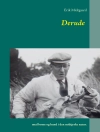In ‘Micrographia’, Robert Hooke embarks on a groundbreaking exploration of the microscopic world, unveiling the previously invisible intricacies of nature through meticulous observation and detailed illustrations. This seminal work, published in 1665, represents a significant shift in scientific inquiry, paralleling the rise of the scientific revolution. Hooke’s prose weaves together eloquent description with empirical observation, providing a vivid account of his experiments that range from the structure of a flea to the intricate patterns of a cork’s cellular structure. His innovative use of the microscope not only revolutionizes biology but also sets a precedent for the visual representation of scientific findings. Robert Hooke, an esteemed polymath and member of the Royal Society, was deeply influenced by the intellectual currents of his time, particularly the emphasis on observation as a means of knowledge. His background in physics, architecture, and natural history equipped him with a unique perspective that allowed him to interpret his observations in innovative ways. Hooke’s collaborative nature and friendship with contemporaries like Sir Isaac Newton positioned him at the forefront of scientific discourse, driving his desire to share the wonders he unearthed through his lens. ‘*****Micrographia’***** is indispensable for anyone seeking to understand the origins of modern microscopy and its implications on life sciences. This work not only provokes a sense of wonder about the natural world but also encourages a deeper appreciation for the intricate details that define our universe. Reading Hooke’s text will enrich your understanding of both historical scientific methods and the profound nature of inquiry.
A propos de l’auteur
Robert Hooke (1635–1703) was a prolific English natural philosopher, architect, and polymath who played a significant role in the scientific revolution through his work and influence. A contemporary of Isaac Newton and Christopher Wren, Hooke made foundational contributions across multiple scientific disciplines. Most notably, in his capacity as Curator of Experiments for the Royal Society, Hooke authored ‘Micrographia’ (1665), a seminal work that offered the world one of its first detailed explorations into the realm of the microscopic. In ‘Micrographia’, Hooke not only coined the term ‘cell’ for the basic biological structures he observed in cork, but he also documented an extensive range of observations of minerals, fossils, and organisms, capturing the imagination of the scientific community with his detailed illustrations. Hooke’s inquisitive nature and mechanical genius were evident in his varied inventions and improvements to scientific instruments, including the compound microscope. His literary style was characterized by both rigorous empirical observation and a certain vividness in description, which helped to make the sciences more accessible and captivating to a wider audience. Hooke’s work contributed substantially to the evolution of scientific methodology, emphasizing observation, experimentation, and the use of advanced technology in natural inquiry.












